Today, Hawaiian Airlines has entered into another agreement with Singapore Airlines. Singapore’s SIA Engineering (SIAEC) Company will now perform airframe maintenance services on Hawaiian’s fleet of 18 A321neo aircraft through 2027. The work, however, will not be performed in Singapore. Instead, it will be done at the company’s maintenance facility located in Clark, Philippines. In an interesting coincidence, Hawaiian Airlines also has its Call Center base in the Phillippines.
Maintenance performed in foreign countries is not unusual.
We don’t often consider the maintenance of airliners flying to and from Hawaii until what happened this week, with not one but two United Airlines Hawaii diversions yesterday alone. We always think that safety on Hawaii flights takes on a whole different meaning when the nearest place to land can be up to 3 hours away.
Airliners are safe and have redundant systems, including stringent ETOPS on the world’s longest overwater flights to Hawaii to prevent these problems from becoming catastrophic.
You may recall that Hawaiian previously entered agreements with Singapore for maintaining the company’s fleet of wideb0dy A330-200 planes. We also believe Singapore will be the maintenance provider for the completely separate Hawaiian Airlines A330-330 fleet associated with the Hawaiian/Amazon deal announced last fall. That was not mentioned, however, as part of this agreement.
Hawaiian Airlines’ prior agreement with Singapore was for Airbus A330-200 fleet.
That fleet now has an average age of over 10 years, meaning additional “heavy” maintenance checks will be forthcoming. What was termed 12-year checks started in March 2022 for airframe maintenance.
Did maintenance move from Singapore to the Philippines?
The previous announcement between Singapore and Hawaiian clearly indicated that the A330 maintenance would be performed at the company’s facilities in Singapore rather than in the Philippines. So today’s announcement appears to represent a change in where the work will be done.
The 2021 A330 agreement extended a previous relationship between the two companies. When that was announced 18 months ago, Jim Landers, SVP of Tech. Operations at Hawaiian said, “This agreement is a testament to the demonstrated performance of SIAEC on work performed to date on our A330 fleet. In a maintenance provider, we expect and rely on timeliness, quality, and value. SIAEC has not only delivered on all three but additionally demonstrated flexibility and responsiveness through the challenges of the COVID turmoil. We are confident in our choice of SIAEC as a long-term provider and partner.”
Foreign maintenance of US airlines’ aircraft is back in focus this week.
Your recent comments on this topic:
Mac: “I think all C and D level maintenance work need to be done with FAA certified mechanics with highly proficient English language comprehension.”
Ernie: “The FAA should be all over the Foreign Country companies that perform Any Maintenance on Aircraft. Understanding cheaper labor costs and such, however, if there’s not any reliability of the job performed properly, significant lives are at risk. The FAA Must have Complete in person Oversight! This is Crazy.”
Richard: “Nearly All U.S. airlines do this … and while I do Not agree with the policy — and believe me, I don’t as I’m a former commercial airline pilot, based in HNL for years, and experienced some of the slip-shod maintenance results that came about as a result of using foreign/overseas maintenance facilities — but remember — it’s all about the $$$$$$$. I get anxious thinking about taking a twin engine jet ride across the great expanse of the Pacific Ocean where no diversion airports exist. ETOPS can only be trusted up to a certain point. Once an ETOPS jet falls into the ocean between the islands and the continents, people are going to think whatever happened to the 4 engine jets.”
John: “SWA outsources Aircraft Heavy Maint Checks to El Salvador.”
The ABCD airliner maintenance system.
Airlines call routine maintenance inspections “checks,” and they go by the names A, B, C, and D. A and B checks are lighter checks, while C and D are heavy checks. D checks, in particular, are extensive, and inordinately time-consuming, multi-million dollar expenses and often occur at companies other than the airlines.
A checks: Every 200+ flights on average and require up to 70 person-hours of work.
B checks: Every 6+ months on average and require up to 180 person-hours of work. A and B checks may be combined.
C checks: Every 20+ months, typically wherein most of the plane’s components are inspected. This takes aircraft out of service for up to 2 weeks and can include up to 6,000 hours of work. It can also look for corrosion or inspect “high-load” aircraft components (Aloha 243). Aircraft upgrades are often performed then too.
D checks: This is the most serious “heavy maintenance” check. It used to take place every six years, but on newer planes, we are told it can be up to 12 years. The entire aircraft is inspected and overhauled. Paint may also be removed to check the actual metal skin beneath. All wing, tail, flap, and rudder panels are unscrewed. Cables, bolts, bearings, and brackets are removed and inspected. Even the landing gear is taken apart and checked for possible cracks, leaks, and corrosion. Jet engines are removed as well. The interior, including seats, tables, bins, and side panels, is taken down to bare metal for inspection and then reassembled.
D checks like those done at SIA take up to 50,000 person-hours.
This takes place over two months out of service. It is a multi-million dollar undertaking, and planes are scheduled for these far in advance. It can also be the time to remove older planes from service to avoid the D check. Typically, only two to three D checks are done in an airliner’s lifetime.
Why is heavy maintenance performed overseas?
The cost of a D check can be from $1.5 to well over $5 million. And those numbers are probably too low.
Most U.S. airlines have moved D checks overseas, where few mechanics are FAA certified, and some may be unable to read or speak English. The technical manuals are in English only, we believe. FAA-certified mechanics, however, must have English proficiency. While foreign facilities may be FAA certified, that does not mean all or even most of their mechanics are.
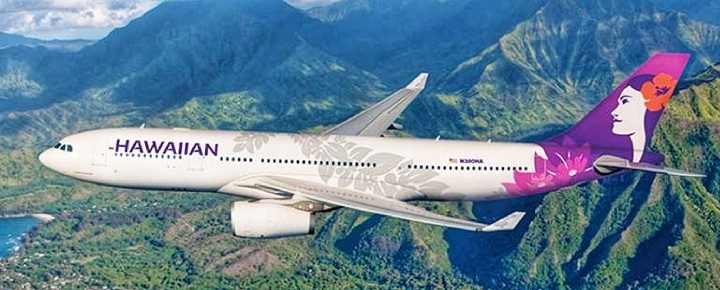
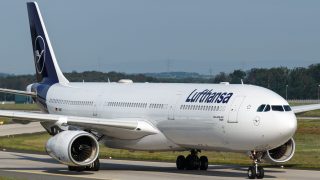
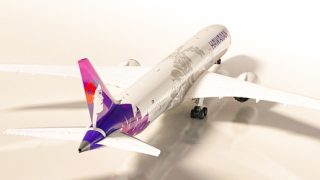
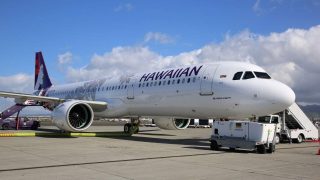
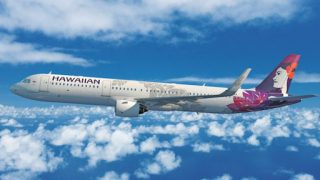
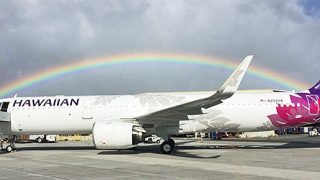
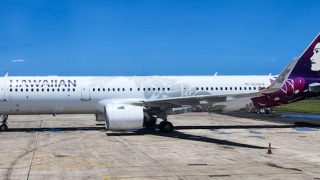
When will Hawaiian Airlines fly from HNL to CRK non stop as opposed to MNL? I mean most Filipinos in Hawaii are from the Northern part of the Philippines. Anything to bypass MNL is always a plus. Clark airport (CRK) is the clear answer here. I hope the Philippine Consul General in Hawaii is working this. Clark is far better than NAIA. Mahalo.
I would feel safer on an Airbus plane manufactured in Europe and maintained in the Philippines than a Dreamliner built in North Carolina and maintained in the US. Boeing has shown that American companies compromise safety over shareholder returns. Considering the standards of the Singapore government vs the US, this decision by Hawaiian may be in our best interest.
Based on the article and comments there is clear lack of understanding on the practices that exist in the entire airline industry. First, the A321s in question were manufactured overseas and still had to get FAA airworthiness. They are N-registered US aircraft with FAA airworthiness certifications and are still have the Same FAA oversight as they would have if the work was done anywhere else. The same FAA qualifications for signoffs required, etc. Zero difference. Most airlines outsource much of their D-level work. Thinking the FAA has the highest standards is also not correct. Singapore is the 5th safest airline in the world above All US carriers, the top 7 are not US airlines, Alaska and Hawaiian are the top US airlines for safety.
Agreed.
SIA Engineering company has Singapore & Philippine bases, with capability on current and new generation of Airbus, Boeing and Embraer aircrafts. Singapore Airlines themselves, are rated No. 1 & 2 worldwide. Love to fly both SQ and Hawaiian! I think some of the readers are not well informed….
Outsourcing aircraft maintenece? Hawaiian Airlines upgraded software system is like a snowball of “glitches” hitting consumers all at once. We are it seems here in Hawaii unable to voice our discontent with delays and policies that are not consumer friendly. My unused tickets are disappearing from HA’s data base due most recently to their software upgrade. Your recourse to use unexpired tickets is in a written request to their consumer affairs department who can verify unused tickets? I really don’t buy that. HA’s Phillipine based outsourced reservation agents are mostly unable to find unused tickets for rebooking. I can’t see this revenue not being returned to passengers and going to an airlines profit margin.
I am A&P licensed aircraft technician but retired for 40 years at Northrop Grumman. Thank you. I speak tagalog.
Hawaiian Airlines, in my observations and this article, is shifting more and more to foreign countries to provide them with Cheap Labor. What about Hawaii? So much for HAL commitment to the Hawaiian Islands and People! Without FAA Oversight how soon will Severe, and Minor, Problems Occur? Trading Dollars for Safety and Lives Doesn’t Make Sense!
The trouble is available labor in HI (big issue) and competition, Hawaiian Airlines is the 8th largest employer in the state. Folks want the lowest prices and with competition they have to find ways to keep ticket prices reasonable. They 100% still have to comply with all FAA requirements, the planes are FAA registered (N- registration on the aircraft) and will always be under FAA oversight as long as they are a US registered, FAA is not the most strict in the world, but is pretty strict. Remember, the A321 they are discussing was built in Europe (more strict), that doesn’t mean it is shoddy or it doesn’t have to meet FAA standards, so maintaining an airplane overseas that was built overseas shouldn’t be any news at all.
It’s too bad Hawaiian Air does not support aircraft workers in Hawai’i by having airframe maintenance done locally.
So. Airbus is a European company, Embraer is Brazilian, Rolls Royce is British and even the US engine manufacturer Pratt and Whitney has a lot manufactured abroad. Having travelled and lived all the world I can say it is delusional to think American labor is best. Not only is it more expensive (=higher ticket costs) it is not the best in quality by a long shot. That mindset is misguided American “triumphalist” mentality and partially why the US is losing its competitive footing.
Surprised that the airline unions haven’t pushed hardtop get maintenance done in the USA. SWA just built a hanger at the Denver Airpot. UAL and Frontier also have hangers in Denver. At one time Denver was in the running for a major maintenance for UAL some time ago. But because the Denver city council voted not to give UAL and tax incentives SFO won the bid. 3 million sq feet under roof and 127 acres. If UAL can do it all the other can do the same. Check out the YouTube video of the UAL maintenance facility. American Airlines has facility in Tulsa OK. with 3 millon sq under roof too.